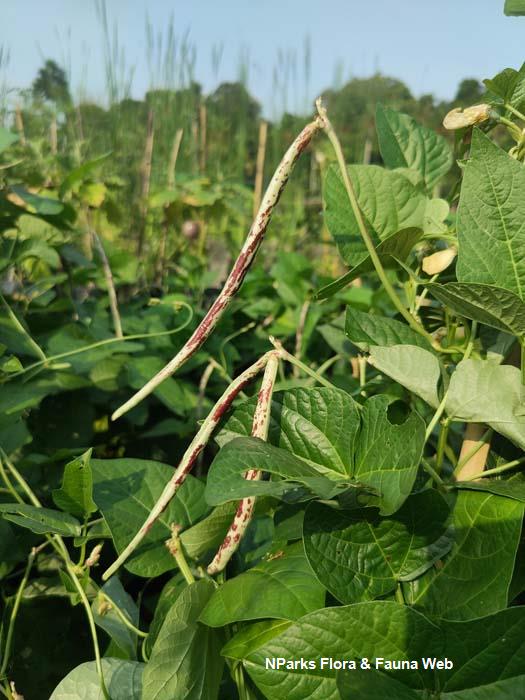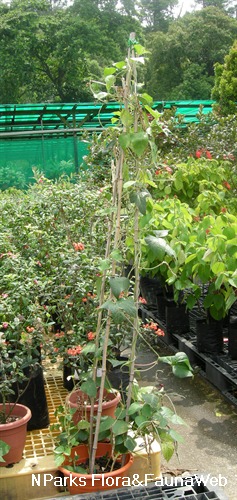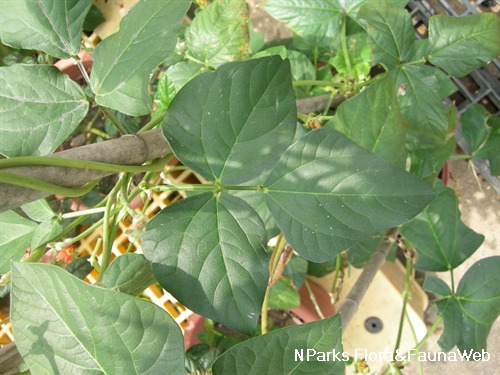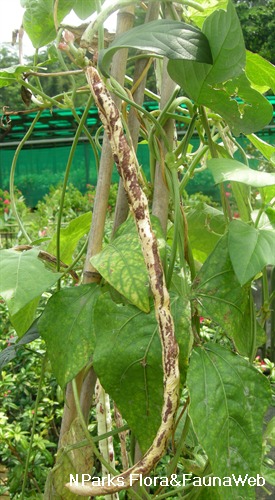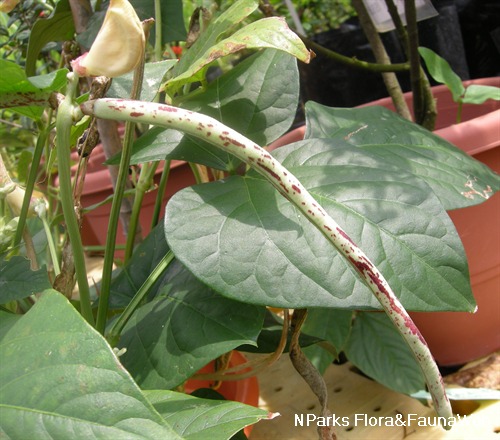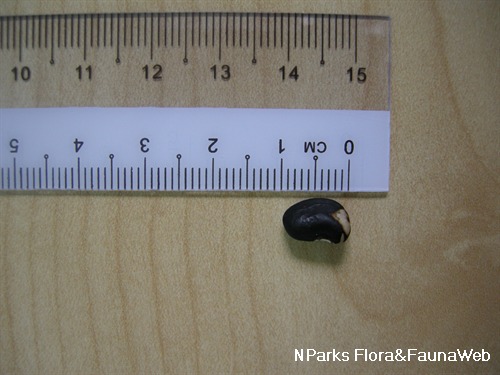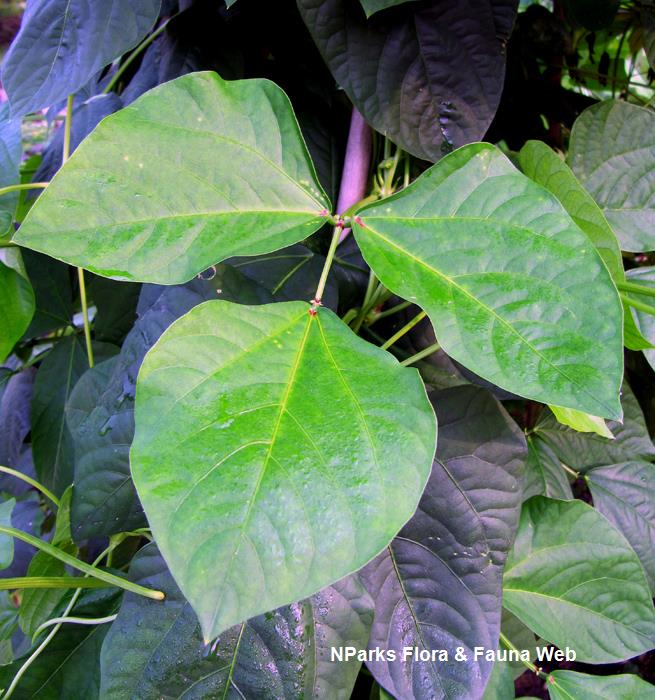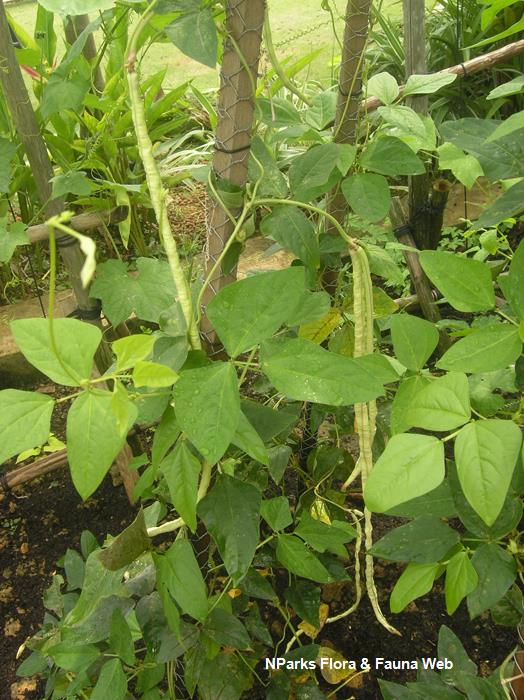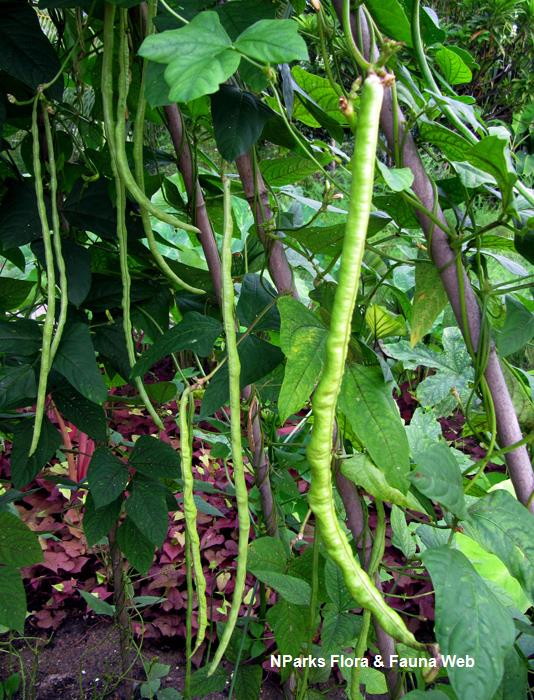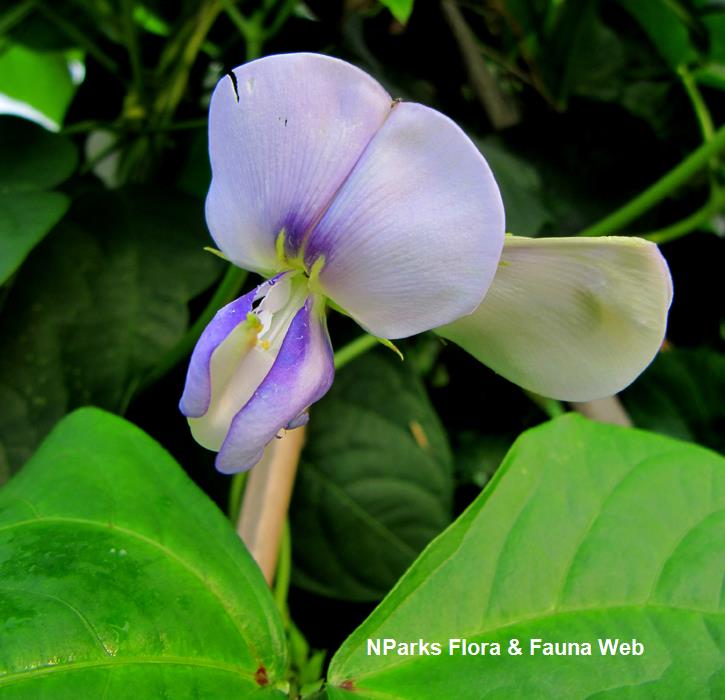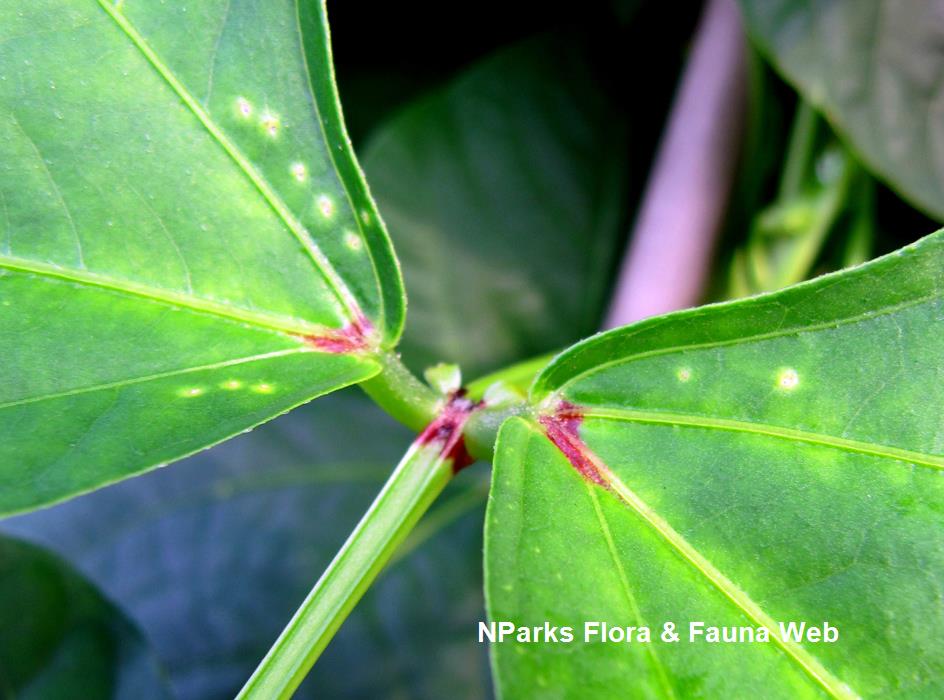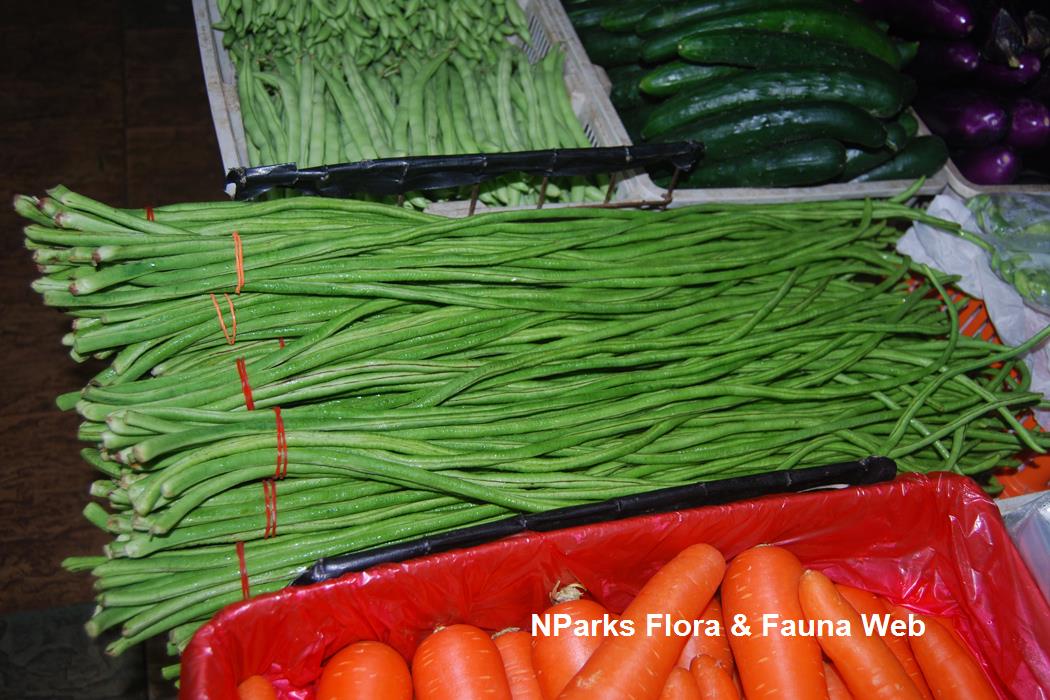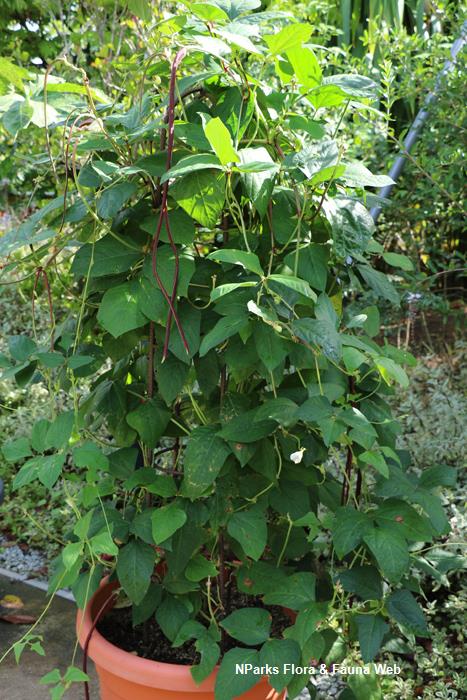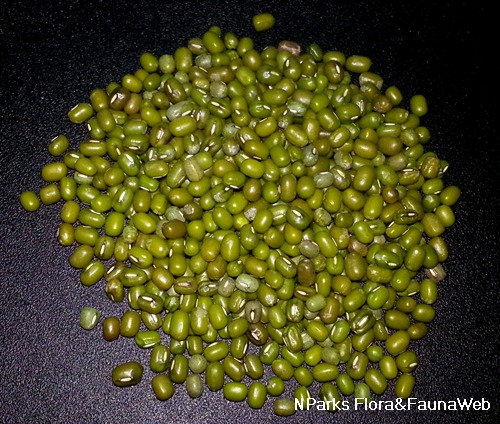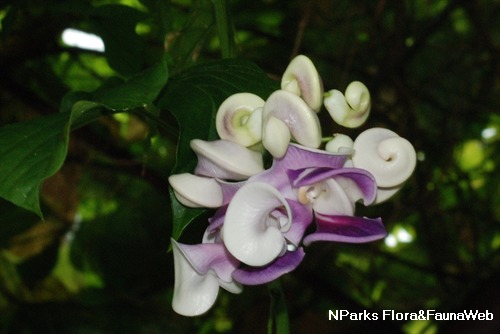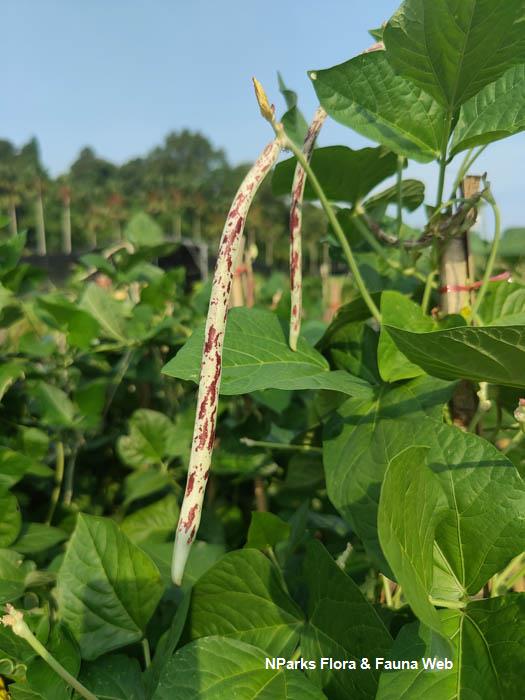
Back
Vigna unguiculata Sesquipedalis Group
| Family Name: | Fabaceae (Leguminosae) |
| Synonyms: | Vigna unguiculata subsp. sesquipedalis, Dolichos sesquipedalis L., Vigna sesquipedalis (L.) Fuhrw. |
| Common Name: | Yard-long Bean, Snake Bean |
Name
Classifications and Characteristics
| Plant Division | Angiosperms (Flowering Seed Plants) (Dicotyledon) |
|---|---|
| Plant Growth Form | Climber |
| Lifespan (in Singapore) | Annual |
| Mode of Nutrition | Autotrophic |
| Chromosome Number | 22 |
Biogeography
| Native Habitat | Terrestrial |
|---|
Description and Ethnobotany
| Growth Form | A climbing, annual vine eraching up to 2 to 4m in length. |
|---|---|
| Foliage | The leaves are alternately arranged along the stem and are trifoliate, the first two leaflets being asymmetrical in shape with the terminal leaflet being ovate and symmetrical in shape. |
| Stems | The stems have a twining growth form and are slightly ribbed. |
| Flowers | The flowers are borne on axillary racemes, the flowers being yellowish in colour. |
| Fruit | The fruit is a pendant pod, inflated and succulent when immature and dry and constricted when mature. The immature pod is light green with red patches which turns light yellow-brown with brown patches when mature. |
| Cultivation | It is ideally grown under full sun but can tolerate some shade. It performs well under humid conditions as it is not very susceptible to fungal diseases and can be grown in all soil types but does not tolerate waterlogging. It can tolerate slightly acidic soil with ideal soil pH levels from 5.5 to 7.5. |
| Ethnobotanical Uses | Edible Plant Parts : Edible Fruits Food (Fruit or Vegetable): It is a very important vegetable crop in South-East Asia due to its high nutritional value as well as its high level of consumption. The succulent immature pods are cooked as vegetables and can be combined with various sauces and spices. It is a very important component of vegetable soups. |
Landscaping Features
| Desirable Plant Features | Ornamental Fruits, Ornamental Form |
|---|---|
| Landscape Uses | Parks & Gardens, Small Gardens, Trellis / Arbour / Pergola |
| Thematic Landscaping | Economic Garden |
Plant Care and Propagation
| Light Preference | Full Sun |
|---|---|
| Water Preference | Moderate Water |
| Plant Growth Rate | Moderate |
| Potential Problems | Snake Bean is susceptible to aphids which are found on the leaf underside and may cause leaves and stems to curl, fruits to become distorted, and sooty mould which is attracted by the sweet aphid excrement may form on the leaf. Aphids also spread plant viruses. Avoid over-fertilising which may attract them.
Snake Bean is also susceptible to Mosaic Virus. Always buy seeds from reputable source and remove diseased plants immediately. |
| Diseases | Mosaic Virus, Sooty Mould |
| Pest(s) | Sucking Insects |
| Propagation Method | Seed |
| Propagation Method Remarks | The dried seeds do not have any dormancy period and should be sown directly into the growing medium in groups of 4 to 6 seeds. |
Floral (Angiosperm)
| Flower Colour(s) | Yellow / Golden |
|---|---|
| Flower Texture(s) | Smooth |
| Flower Grouping | Cluster / Inflorescence |
| Flower Location | Axillary |
| Flower Symmetry | Bilateral |
| Individual Flower Shape | Papilionaceous / Pea-shaped |
| Inflorescence Type | Raceme |
Fruit, Seed and Spore
| Mature Fruit Colour(s) | Brown, Yellow / Golden, Patterned |
|---|---|
| Mature Fruit Texture(s) | Papery |
| Fruit Classification | Simple Fruit |
| Fruit Type | |
| Mature Seed Colour(s) | Black, White |
| Seed Description | The seed is black with a white hilum and is approximatley 1cm in length and 0.5cm in width. |
| Seed Quantity Per Fruit | Numerous (>20) |
Image Repository
Others
| Master ID | 31428 |
|---|---|
| Species ID | 5825 |
| Flora Disclaimer | The information in this website has been compiled from reliable sources, such as reference works on medicinal plants. It is not a substitute for medical advice or treatment and NParks does not purport to provide any medical advice. Readers should always consult his/her physician before using or consuming a plant for medicinal purposes. |


